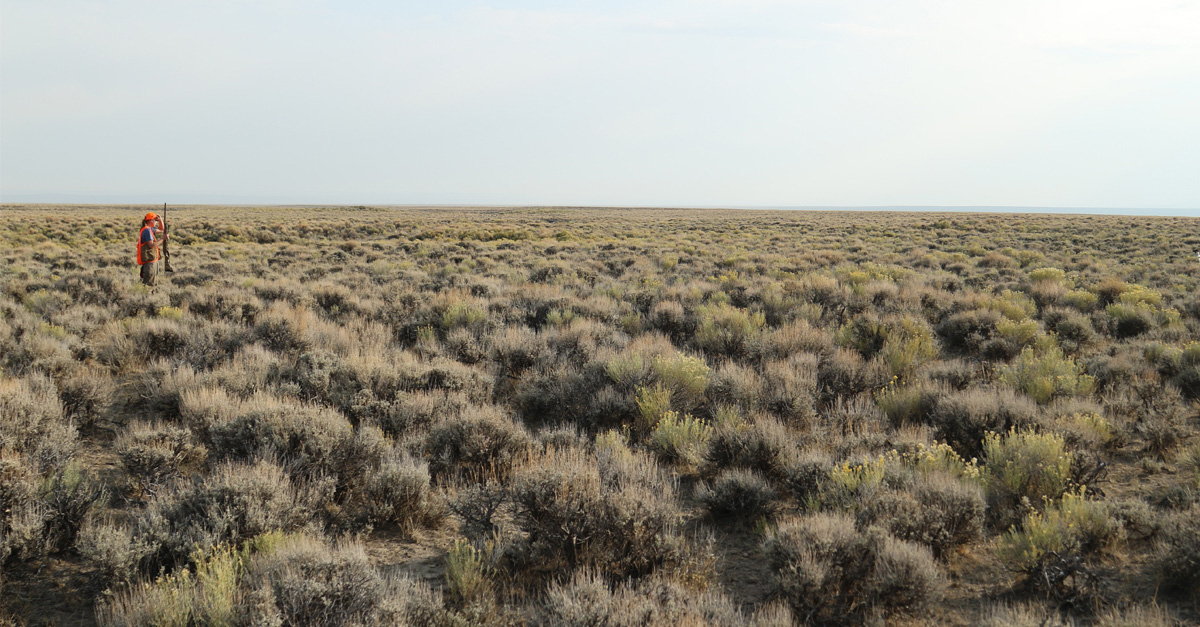The TRCP joins forces with key partners to push for a North American Grasslands Conservation Act with strong investments in grassland and sagebrush restoration
The past year and a half has given Americans plenty to worry about. But in these troubling times, we’ve rediscovered an incredible resource that grounds us and helps us cope—the outdoors. And just as participation in hunting, fishing, and outdoor recreation are soaring, these landscapes and our fish and wildlife resources are facing many challenges.
One that has flown under the radar is the loss of native grasslands. In fact, our once vast prairies are now one of the most threatened ecosystems on the planet. Nationwide, more than 50 million acres of grassland habitat have disappeared from the landscape in the last 10 years alone, according to a World Wildlife Fund report.
There is, however, a plan to conserve grasslands and sagebrush before it’s too late. A group of leading conservation organizations—including the TRCP, Pheasants Forever and Quail Forever, National Wildlife Federation, Backcountry Hunters & Anglers, Izaak Walton League, North American Grouse Partnership, National Deer Association, and Land Trust Alliance—are bringing together all those who rely on grasslands to conserve this essential habitat for future generations, while also providing economic opportunities for ranchers, farmers, and outdoor recreation businesses.
The idea is built on a proven model of conservation success and is in front of key lawmakers right now—our hope is that a North American Grasslands Conservation Act will be introduced in Congress this fall. Here’s what you need to know and how you can help.

What would the North American Grasslands Conservation Act do?
A North American Grasslands Conservation Act would provide funding needed to restore and conserve what remains of America’s grasslands and sagebrush habitat while creating a program that would work with private landowners—whose working farms and ranches are key to the success of this ecosystem.
The Act would establish a grant program designed to provide landowners with voluntary, flexible economic incentives and opportunities to help improve and conserve our disappearing grasslands. The funding could go toward restoring native grasses, controlling invasive species, managing with prescribed fire, or fighting conifer tree encroachment that has been turning our grasslands into forests with little utility for grassland-dependent species.
This approach is innovative, but there is already a model for its success: The North American Wetlands Conservation Act. Its voluntary incentives have helped to fund nearly 3,000 wetlands improvement projects across 30 million acres in all 50 states.
What NAWCA has done for waterfowl, the North American Grasslands Conservation Act could do for pronghorns, sage grouse, mule deer, and many other species. And NAWCA has also had a tremendous economic impact that could be replicated in prairie states. A program such as a North American Grasslands Act would create new economic opportunities by funding conservation jobs, improving habitat that supports outdoor recreation and ranching businesses, and investing in the wildlife populations that support hunting and other wildlife-related tourism.
How can hunters and anglers help?
Grasslands and the sagebrush steppe are under threat, but by working together, we can ensure their beauty for future generations and for all those who rely on them. You can call on lawmakers to support the idea behind the North American Grasslands Conservation Act by taking action at actforgrasslands.org.






We aren’t the only specie on Earth! We must stop destroying the habitats, the wild life support systems which are the grasslands.
Hope this endeavor gathers momentum! Grasslands provide habitat for hundreds of species. Will contact my Montana reps and ask their support. Curious why the Mule Deer Foundation is not a supporting organization?
Our environmental concerns should be our top priority. Help preserve our sage brushes and ecosystems as biodiversity is necessary in our world – such as we live in.
perserving grasslands is important to wildlife survival.
This is greatly needed for our wildlife and our fight for clean water , air , and climate !
IF WE LOSE GRASSLANDS, SAGEBRUSH AND MANY OTHER WILD SPACES FOR THE FEW WHO PURCHASE THEM TO MAKE MONEY, FUTURE GENERATIONS WILL SEE THIS AS THE BIG STEAL!
We need stop putting row crops on land that should be in pastureland or in hay; and slow down the mowing and give grassland birds a chance to have successful nesting of young birds.
Many grassland birds species such as the meadowlarks, bobolinks, and various sparrows are disappearing from the landscape thanks to aggressive farming and the use of big machinery.